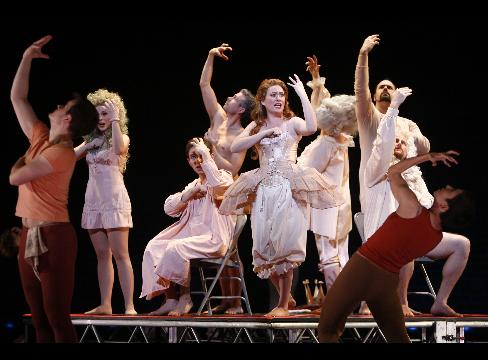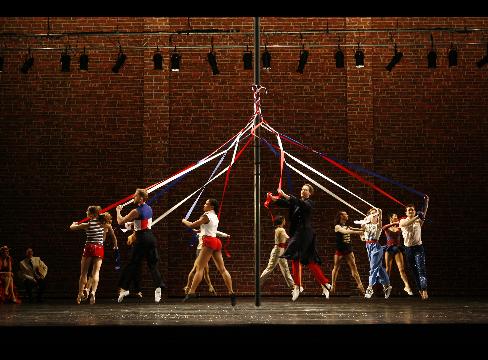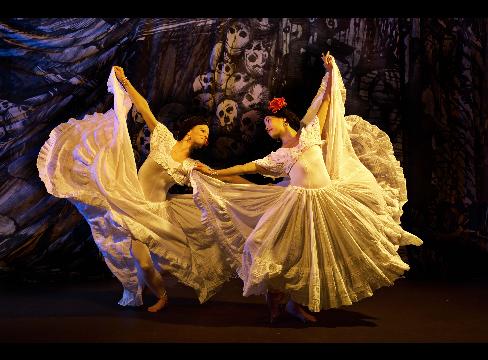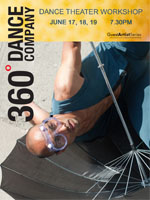Seeing Things: March 2008 Archives
I've always thought of myself as an addictive personality, but life is forever proving me wrong.
Take alcohol, for instance. My father--himself only a social drinker, and not much of one at that--introduced me to an occasional dab on the tongue of very good scotch when I was a mere child, so that, as he put it in his raspy voice, I wouldn't make a fool of myself when I got older. The Scotch tasted foreign and, in the parlance of my tender years, yucky. At the same time it seemed one of the accoutrements of the adult world, a realm I aspired to, childhood as I perceived it being a claustrophobic thicket of arbitrary rules.
On my first date--age thirteen, at the "nightclub" of a Borscht Belt hotel--my youthful swain asked me what I'd like to drink and suggested an innocuous just mildly spiked lemonade affair suitable for young virgins. Duly cognizant of the dangers of imbibing a substance I'd never tried at home, I rebuffed his cautious proposal and requested a scotch and soda. Scotch was the only alcoholic beverage I knew besides wine. Wine was my mother's preference. My mom always claimed scotch tasted like shoe polish. What bizarre experiment could have brought her to that conclusion?
A couple of decades hence, having turned into a dance journalist, I became aware of the heavy drinking indulged in by a couple of my colleagues. (I myself learned in time that there are some performances--I call them "double-scotch events"--that might easily drive one to drink, but it's hard to review them coherently in a state of advanced intoxication.) So fearful was I that I might become similarly undone, I observed an annual two-week total abstinence just to make sure I had "demon liquor" under control. I did, Puritan that I was.
Take smoking, then. I took it up at college, having already been raised in a cloud of secondhand smoke. Both my parents were two-packs-a-day consumers--and my father a physician, no less. My sense of the glamour of smoking came, of course, from the old movies (Now, Voyager, for instance) and the fact that my minor in French led me to hang out with the most chic professors in the school. When I could afford those hyacinth blue packets, I bought Gauloises. The rest of the time, I resorted, as my French idols did, to Camels, reputed, perhaps falsely, to carry the heaviest load of nicotine and tar available. I never inhaled.
Next, in short order, I graduated, married, and duly produced a baby. (That's how we did things back in the day--took care of lots of the heavy stuff before we reached the age of reason.) I found that I was relaxed enough to smoke only when I sat down to nurse my infant son. One day, after he'd lost his crib hair, I noticed to my horror that still-glowing ashes from my cigarette were falling onto his dear bald head. I quit smoking then and there. No withdrawal symptoms arrived to plague me, and I rarely missed cigarettes. The glamour of smoking had lain with my cinematic and Parisian models; a sleep-deprived housewife and nursing mom simultaneously trying to earn her master's degree in English lit has, by definition, lost her passport to that world. I spoke a lot of French to my infant, just to keep my hand in and secretly adhering to the theory that a foreign tongue can be imbibed with one's mother's milk. My son, as it turned out, did not confirm that theory. He was a scandalously early talker--spoke in sentences, indeed paragraphs, before he could walk--but, though he'd obey a command in French if caught unaware, his utterances were firmly confined to English.
I didn't do drugs either. Not even recreational ones. I didn't work up the courage to try until I had two half-grown kids, and then I felt that if I was instructing them to say no, I had to follow the rule myself. Eventually, the aforementioned son, home on holiday from his name-brand college, where he had tried out a number of controlled substances, brought me, at my request, a cache of marijuana. I put it away carefully to save for "the proper occasion" and, predictably, managed to lose it. From time to time I look desultorily through my drawers and files, in the faint hope of retrieving evidence of a misspent youth I had never managed to have. My daughter took after me. Arriving home after a college party--she attended the same institution as her brother, whose description of the very same party included a gaudy menu of pharmaceutical refreshments--she asked me mournfully, "Why doesn't anyone ever offer me a controlled substance?" I sympathized and explained, "You're just not the type."
My addiction of choice--or, rather, necessity--is pitifully harmless: caffeine. How else, I often wonder, could I have survived the rigors of devoted child-raising coupled with a (I use the word advisedly) career in writing about dance? I have quit, cold turkey, several times, the main withdrawal symptom being a piercing headache that no aspirin can ameliorate. I'd stay off all sources of caffeine--even chocolate--for weeks, even months, then relapse, relief far outweighing guilt. My most memorable succumbing was through an intensely rich double espresso bought from a celebrated restaurant's outdoor cart in Little Italy. I sipped it slowly, with the deepest pleasure, walking down Grand Street. After five minutes, everywhere I looked, colors jumped out at me, more vivid than anything that has ever hung on MoMA's walls. Marvelous stuff, coffee. To paraphrase Sydney Smith's paean to tea: Thank God for coffee! What would the world do without coffee? How did it exist? I am glad I was not born before coffee.
Over the years I decided that there must be a gene for addiction. This was simply a fantasy on my part, but lately researchers have been looking seriously into the possibility that some people are simply born vulnerable to indulgences capable of destroying body and soul. I know for sure that there's a gene for understanding the digital world, another for attaining whatever mathematical capabilities follow the memorization of the multiplication tables, and yet another for a sense of geography that keeps one from getting lost the moment one leaves home base. I don't have any of them. I'm good with children, I have a keen eye for style, and some people even think I can write.
© 2008 Tobi Tobias
This article originally appeared in the Culture section of Bloomberg News on March 7, 2008.
March 7 (Bloomberg) -- ``King Arthur,'' John Dryden's 1691 play in rhymed couplets, isn't worth keeping, according to Mark Morris, but the songs Henry Purcell provided for it, with lyrics by the playwright, are beguiling.
So, for his production at the New York City Opera, the choreographer junked the spoken text (and therefore the plot, not to mention the king, who is represented only by a gimcrack crown).
Morris's ``vaudeville,'' as he calls it, is a maverick ode to joy. The principal vocalists and the Mark Morris dancers frolic onstage while a chorus of singers shares the pit with the instrumentalists, vibrantly conducted by the early-music specialist Jane Glover.

The cast of New York City Opera's "King Arthur" performs onstage with the Mark Morris Dance Group in New York on March 2, 2008. The show, which is a co-production of the English National Opera, the Mark Morris Dance Group, the New York City Opera, and Cal Performances, runs in repertory through March 15 at the New York State Theater at Lincoln Center in New York. Photographer: Carol Rosegg/New York City Opera via Bloomberg News
The piece has the deliberate feel of putting on a show from nothing but a few stray scraps, fleshed out with rampant imagination. Morris has two long-time allies to help him.
Isaac Mizrahi has provided extravagantly imaginative costumes from a wild medley of eras and occasions, some designed, others scavenged from opera storage rooms. Adrianne Lobel weighed in with a bare-bones stage and the skeletal props of a production in rehearsal.
The Morris/Purcell ``King Arthur'' dwells on the theme of love -- of country, of nature and of unfettered erotic pleasure, shifting from one to the other in the blink of an eye.
Shivering Dancers
In the most elaborately zany and charming scene, a stiff old man representing Winter emerges from a Frigidaire as a miniature snow curtain scatters snowflakes and the shivering dancers wrap themselves in blankets. The crystalline soprano Mhairi Lawson plays Cupid, defrosting the place so that love can reign as it should.
The funny mock-military maneuvers that open the show -- referring to the legendary Arthur's Britons defeating the evil Saxons -- are peacefully echoed toward the end in the patriotic devotion of the irresistible ``Fairest Isle,'' a song so tender and guileless, it shrugs off any accusation of chauvinism.
In between there are lewd shenanigans, a skewed fairy scene, an inexplicable but somehow endearing parade of random animals, paeans to British industry and a classical ballerina dressed to rehearse a Romantic ballet with her obligatory, if disoriented, cavalier. Purcell's music remains equal to these latter-day translations, without losing its celestial beauties.

Members of the Mark Morris Dance Group dance around a maypole in New York City Opera's "King Arthur" in New York on March 2, 2008. The show runs in repertory through March 15 at the New York State Theater at Lincoln Center in New York. Photographer: Carol Rosegg/New York City Opera via Bloomberg News
Acknowledging Purcell and Dryden's era, Morris draws upon pre-classical dancing, including folk forms such as the deft braiding of maypole streamers. As usual, he includes visualizations of the songs' lyrics, suavely incorporating the mimed words into the flow of dancing.With all this oddly assorted stuff going on, it's no wonder that ``King Arthur'' lacks the emotional and moral punch of Morris's most memorable works. Still, it's marvelous entertainment.
``King Arthur,'' a co-production of the English National Opera, the Mark Morris Dance Group, the New York City Opera and Cal Performances, runs in repertory through March 15 at the New York State Theater, Lincoln Center, Broadway at 65th Street. Information: +1-212-721-6500; http://www.nycopera.com.
© 2008 Bloomberg L.P. All rights reserved. Reprinted with permission.
This article originally appeared in the Culture section of Bloomberg News on March 6, 2008.
March 6 (Bloomberg) -- Paul Taylor's latest pair of ballets, ``De Suenos'' (Of Dreams) and ``De Suenos que seRepiten'' (Of Recurring Dreams), reflect a passion for Mexico that dates back to his devil-may-care teens, when he first toured the country on a bicycle.
The dances, set to an aural kaleidoscope of Mexican music and street noise, are being performed in the Taylor company's current New York City Center season. Taylor meshes the phantasmagorical imagery and customs of ancient Mexico, particularly those associated with the Day of the Dead, with a tourist's notion of festive Mexico's colorful gaiety and his own belief that life harbors terrible pits of darkness.

Annmaria Mazzini and Lisa Viola perform in the Paul Taylor Dance Company production "De Suenos (of Dreams)" in New York on Aug. 17, 2007. Photographer: Tom Caravaglia/Paul Taylor Dance Company via Bloomberg News
``De Suenos'' is a pageant in which stock figures parade and pose as if for a charade. The dancing is secondary and forgettable, though it bears the familiar Taylor imprint of grotesque beauty. The only remarkable achievement of the piece lies in the choreographer's capturing the way dreams flow from one happening to another, unhampered by logic.
Armed with a candy skull, Richard Chen See represents Death. He faces off against Laura Halzack's serene Virgin of Guadalupe, clothed and crowned in gold, expressing her pure goodness by an impeccable classical-ballet adagio.
Over the Top
Robert Kleinendorst almost goes over the top as a male transvestite prostitute, forced by a handful of macho peasants into a sombrero-crushing hat dance. Their girlfriends shift between dulcet waltzing and cowering before a raised machete. Michael Trusnovec's Deer Dance, though made to look like a National Geographic misfire, is poignant just the same.
The whole business is a picture postcard on which the customary scrawl of ``Wish you were here'' could be read as provocative or at least wickedly enigmatic.

Julie Tice and Sean Mahoney perform in the Paul Taylor Dance Company production "De Suenos Que Se Repiten (of Recurring Dreams)" in New York on Jan 18, 2008. Photographer: Tom Caravaglia/Paul Taylor Dance Company via Bloomberg News
``De Suenos que se Repiten'' echoes the previous piece. It begins exactly where the other ended, with a spotlight singling out the grinning skull of Death. He now rules over an octet of henchpeople, given to faux-primitive rituals. The macabre aspect of a repeated nightmare gives way to a series of odd couplings, each ending in a meaningful kiss on the mouth.
The last duo, the most conventionally romantic, is the high point of the piece: Together, Annmaria Mazzini and Kleinendorst make every lift an embrace.
Suddenly the full cast assembles and it's fiesta time, with overtones of a Broadway musical. Death may fell everyone with his machete, but the Virgin of Guadalupe resurrects them for a few moments of ordinary street life as the curtain falls.
Santo Loquasto's costumes and scenery, typically inventive and gaudy, tend to overwhelm the choreography. The music has been assembled by the Kronos Quartet and recorded on its CD ``Nuevo.'' Taylor wryly claims he made the second ``Suenos'' piece because there was still material on the disk that he hadn't used.
Neither dance really had much of a lasting impact, but I found myself momentarily beguiled by them anyway.
At City Center, 131 W. 55th St., through March 16. Information: +1-212-581-1212; http://www.nycitycenter.org.
© 2008 Bloomberg L.P. All rights reserved. Reprinted with permission.
Sitelines
AJ Ads
 360° Dance Company at DTW offers two socially relevant revivals, Jane Dudley’s solo “Time Is Money” (1932) and Mary Anthony’s “Devil in Massachusetts” (1952) as well as the World Premier of Artistic Director, Martin Lofsnes' "6-1".
360° Dance Company at DTW offers two socially relevant revivals, Jane Dudley’s solo “Time Is Money” (1932) and Mary Anthony’s “Devil in Massachusetts” (1952) as well as the World Premier of Artistic Director, Martin Lofsnes' "6-1".
AJ Blogs
AJBlogCentral | rssculture
Terry Teachout on the arts in New York City
Andrew Taylor on the business of arts & culture
rock culture approximately
Laura Collins-Hughes on arts, culture and coverage
Richard Kessler on arts education
Douglas McLennan's blog
Dalouge Smith advocates for the Arts
Art from the American Outback
Chloe Veltman on how culture will save the world
For immediate release: the arts are marketable
No genre is the new genre
David Jays on theatre and dance
Paul Levy measures the Angles
Judith H. Dobrzynski on Culture
John Rockwell on the arts
innovations and impediments in not-for-profit arts
Jan Herman - arts, media & culture with 'tude
dance
Apollinaire Scherr talks about dance
Tobi Tobias on dance et al...
jazz
Howard Mandel's freelance Urban Improvisation
Focus on New Orleans. Jazz and Other Sounds
Doug Ramsey on Jazz and other matters...
media
Jeff Weinstein's Cultural Mixology
Martha Bayles on Film...
classical music
Fresh ideas on building arts communities
Greg Sandow performs a book-in-progress
Harvey Sachs on music, and various digressions
Bruce Brubaker on all things Piano
Kyle Gann on music after the fact
Greg Sandow on the future of Classical Music
Norman Lebrecht on Shifting Sound Worlds
Joe Horowitz on music
publishing
Jerome Weeks on Books
Scott McLemee on books, ideas & trash-culture ephemera
theatre
Wendy Rosenfield: covering drama, onstage and off
visual
Public Art, Public Space
Regina Hackett takes her Art To Go
John Perreault's art diary
Lee Rosenbaum's Cultural Commentary
